Highlights:
Unique Free & Affordable Activities in San Diego:
1. Roam Through Beauty and Brilliance at Balboa Park
San Diego’s cultural crown jewel bursts with gardens, museums, and endless inspiration
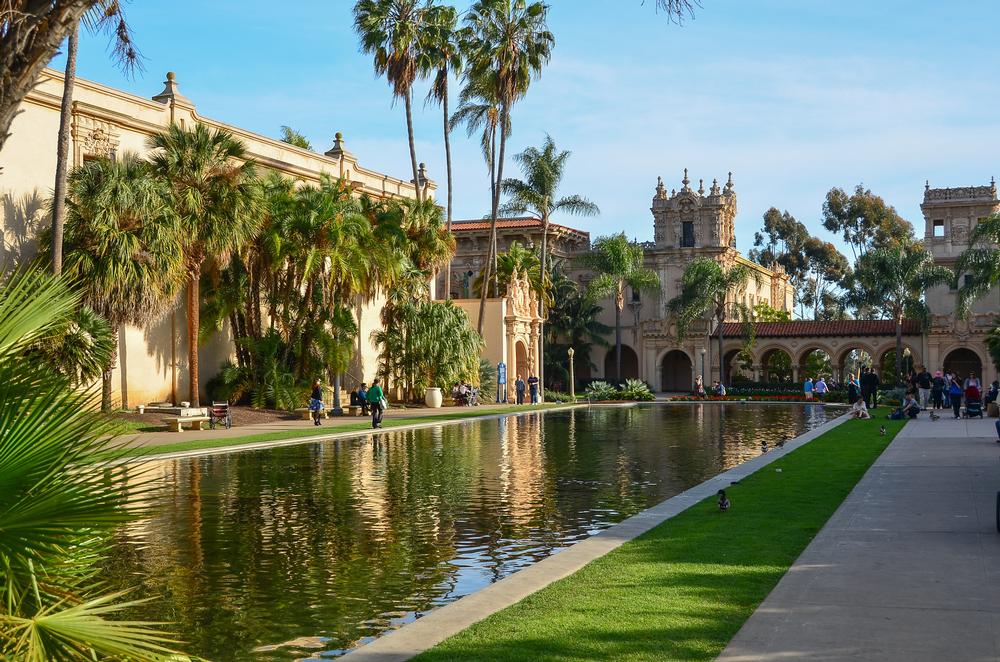
-
What is Balboa Park and when was it established?
- Balboa Park is one of the United States' oldest dedicated urban public park spaces, set aside for future development in 1835 and officially developed into a park following protective legislation in 1870.
-
How large is Balboa Park and where is it located?
- Today, the park spans 1,200 acres northeast of San Diego's downtown center.
-
What are some of the major attractions in Balboa Park?
- The park is home to a vast number of cultural and family-friendly attractions, including the San Diego Museum of Art, the San Diego Natural History Museum, and the world-renowned San Diego Zoo.
-
How is the park laid out?
- Balboa Park features 17 landscaped garden spaces, is traversed by Cabrillo and Florida Canyons, and is divided into three separate mesa spaces.
-
What are some other notable attractions in the park?
- Notable attractions include the Balboa Park Carousel and Miniature Railroad, the Casa del Prado (with buildings reconstructed from the 1915–1916 Panama-California Exposition), and a variety of theatrical and concert amphitheater venues.
-
Is admission to Balboa Park free?
- Park admission is free daily, but many of the park's attractions require an individual ticketed upcharge.
2. Step Back in Time in Old Town San Diego
Wander adobe streets, sample historic eats, and meet the spirit of early California
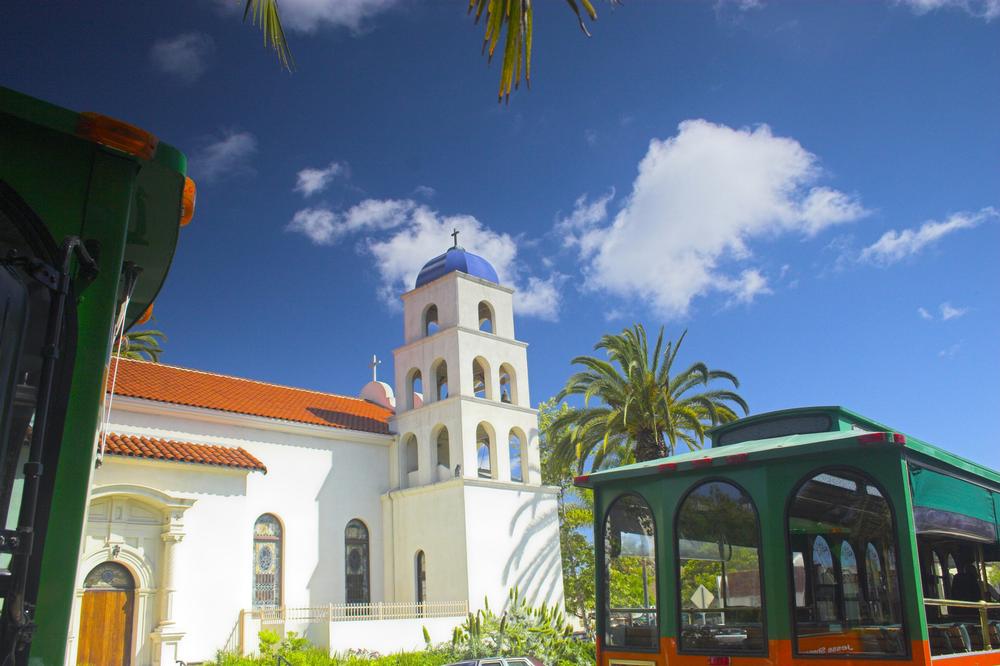
-
What is Old Town San Diego?
- Old Town San Diego is San Diego's oldest neighborhood, spanning 230 acres near Mission and Bankers Hills.
-
What is the historical significance of Old Town San Diego?
- The neighborhood was the site of California's first European settlement, established in 1769 as the San Diego Presidio and Mission San Diego de Alcalá. It remained the city center until the mid-19th century.
-
What is found in Old Town San Diego State Historic Park?
- The National Register of Historic Places-listed Old Town San Diego State Historic Park is home to a wide variety of preserved historic buildings and public educational visitor attractions.
-
What is Heritage Park and what does it include?
- Heritage Park preserves additional historic buildings, including the city's first synagogue.
-
What kinds of shopping experiences are available?
- More than 100 specialty shops are located throughout the neighborhood, including 12 art galleries and the authentic Mexican-style Bazaar del Mundo Shops.
-
What public events are held in Old Town San Diego?
- Special events include the Old Town Art Festival, San Diego's Dia de los Muertos, and the two-day Fiesta Navidad holiday festival.
3. Admire Masterpieces in Stillness at The Timken Museum of Art
Discover world-class works in a serene, free-to-enter sanctuary of fine art
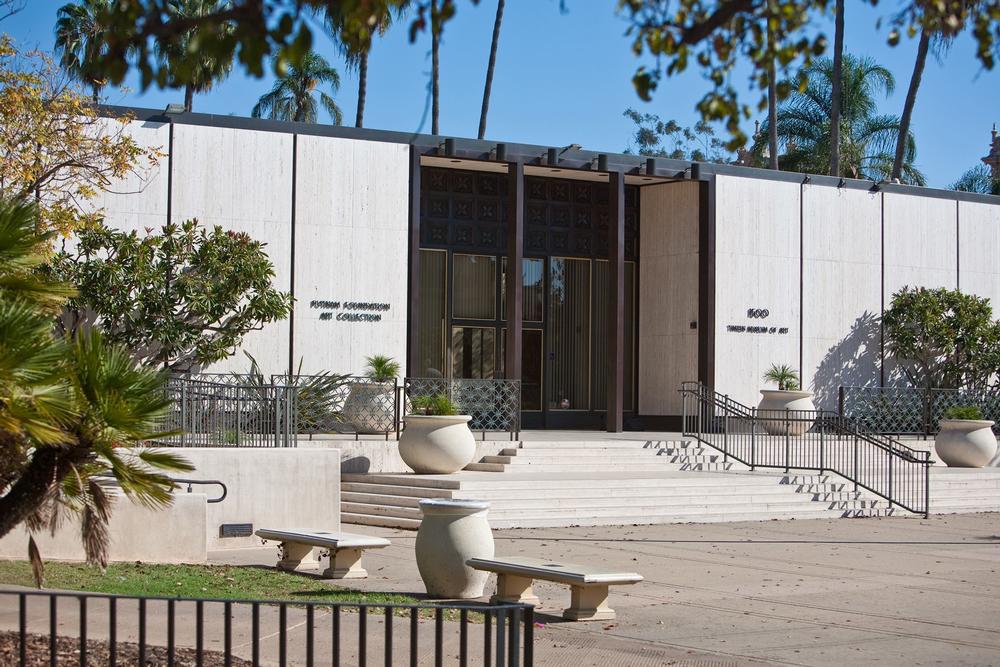
-
What is the Timken Museum of Art?
- The Timken Museum of Art is a fine arts museum within Balboa Park, located adjacent to the San Diego Museum of Art along the El Prado public boulevard.
-
When did the Timken Museum of Art open and why?
- The museum opened to the public in 1965 to display the private collection of Amy and Anne Putnam, curated by the museum’s first director, Walter Ames.
-
Is admission to the museum free?
- Yes, it is the only free-admission museum within Balboa Park and is open to the public Tuesdays through Sundays during the morning and early afternoon.
-
What type of art is displayed at the Timken Museum?
- The museum showcases significant collections of European master paintings, including works by Rembrandt, Guercino, François Clouet, François Boucher, Jacques-Louis David, and Girolamo Savoldo.
-
Are American artists represented in the collection?
- Yes, major works by American artists such as John Singleton Copley and Albert Bierstadt are also displayed.
-
Where is the Timken Museum of Art located?
- 1500 El Prado, San Diego, CA 92101, Phone: 619-239-5548
4. Walk on Air Above a Canyon on the Spruce Street Suspension Bridge
Sway gently through one of San Diego’s most unexpected hidden gems
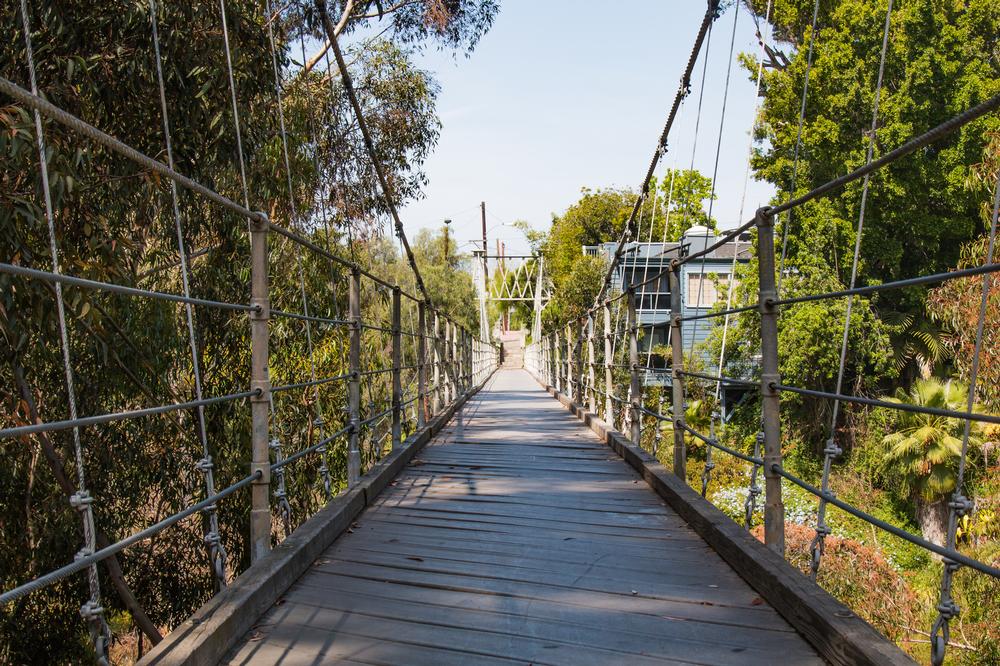
-
What is the Spruce Street Suspension Bridge?
- The Spruce Street Suspension Bridge is a pedestrian suspension bridge and a local favorite located in the city's Bankers Hill neighborhood.
-
Who designed the bridge and why was it built?
- The bridge was designed in 1912 by Edwin Capps to connect the city's new Fourth and Fifth Avenue trolley lines, traversing the previously inaccessible Sessions Canyon.
-
What kind of views does the bridge offer?
- The bridge provides stunning views of the canyon from 70 feet in the air, and it spans a length of 375 feet.
-
Why is the bridge considered romantic?
- It is considered one of the city's most romantic hidden spots and is a favorite off-the-beaten-path attraction for both locals and tourists.
-
Where is the bridge located and how do visitors access it?
- It is accessible from Spruce Street near First Avenue, with free street parking available throughout the residential neighborhood.
-
Does the bridge move during certain conditions?
- Yes, visitors should note that the bridge can swing slightly during times of high wind or rainy weather conditions.
-
What is the address of the Spruce Street Suspension Bridge?
- 220 W Spruce St, San Diego, CA 92103
5. Breathe in Blooms at The Botanical Building
Lush life and architectural charm meet in this beloved Balboa Park icon
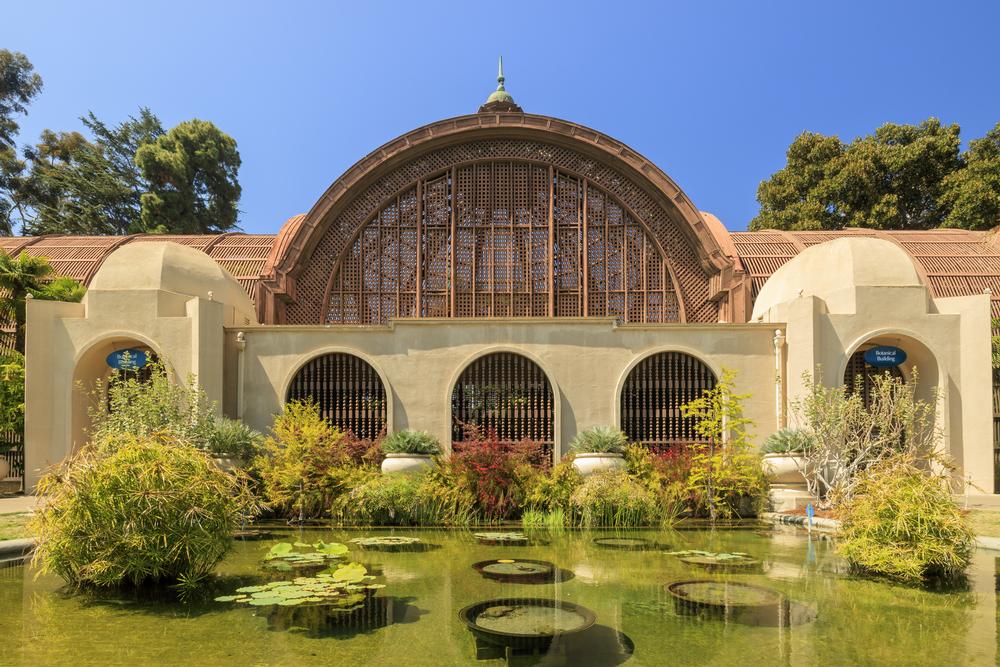
-
What is the Botanical Building in Balboa Park?
- The Botanical Building is one of Balboa Park's most-photographed attractions, originally constructed for the 1915–1916 Panama-California Exposition.
-
What makes the Botanical Building unique?
- It is one of the world's largest lath structures and showcases a collection of more than 2,100 permanent plantings, including orchids, ferns, cycads, palms, and other tropical plants.
-
What other features are included in the Botanical Building?
- A scratch-and-sniff garden and seasonal plant displays are also featured inside the building.
-
What is the Lily Pond and Lagoon?
- Located outside the building, the Lily Pond and Lagoon is a reflecting pool also built for the Exposition, featuring annual plantings of lotuses and water lilies.
-
When is the Botanical Building open to the public?
- The building is open Fridays through Wednesdays during morning and afternoon hours, except on major national holidays.
-
Where is the Botanical Building located?
- It is located adjacent to the Timken Museum of Art.
-
What is the address and contact for the Botanical Building?
- 1549 El Prado, San Diego, CA 92101, Phone: 619-239-0512
6. Soar Beyond the Ordinary at Torrey Pines Gliderport
Watch paragliders lift off above the Pacific or take the leap yourself
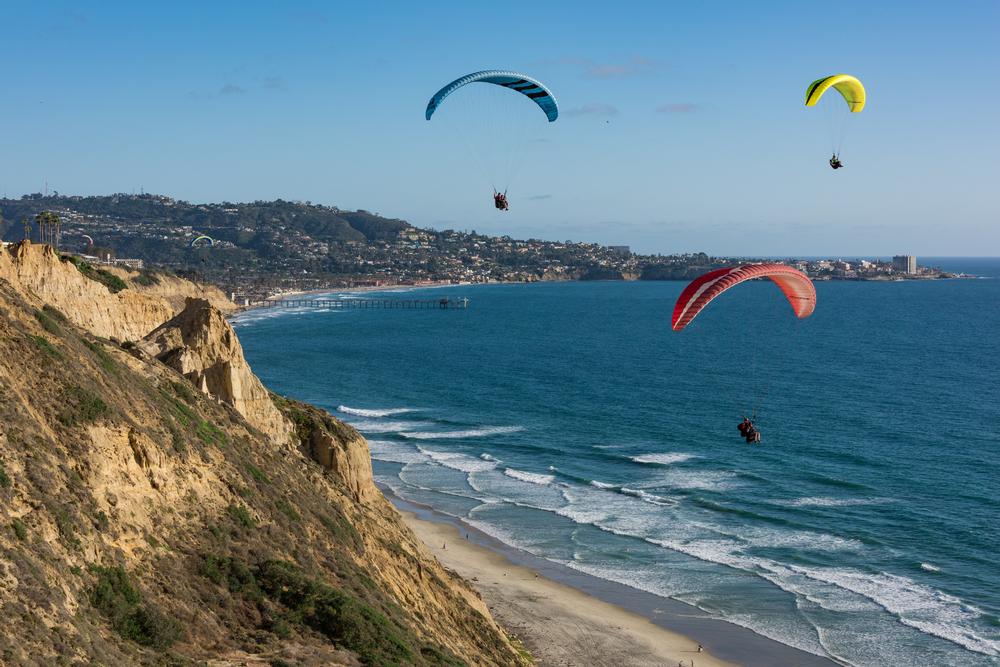
-
What is the Torrey Pines Gliderport?
- The Torrey Pines Gliderport is a municipal private-use glider airport located in San Diego's La Jolla neighborhood, about 11 miles from downtown.
-
When was the gliderport established and what is its historical significance?
- The gliderport was originally established in 1930 and is listed on the National Register of Historic Places. It is often referred to as the "Kitty Hawk of the West" by aviation enthusiasts.
-
Which famous aviators have flown at Torrey Pines?
- Notable aviators who have used the gliderport include Charles Lindbergh, Woody Brown, and Helen Dick.
-
What types of flying activities are available?
- Visitors can fly model planes, hang gliders, and paragliders year-round, weather-permitting. Full-scale sailplanes may also be operated during special permit times in February, March, and April.
-
What amenities does the gliderport offer?
- The site offers stunning views of the Pacific Ocean and downtown San Diego. Sandwiches and snacks are available for purchase at the facility’s Cliff Hanger Cafe.
-
What is the address and contact information for the Torrey Pines Gliderport?
- 2800 Torrey Pines Scenic Dr, La Jolla, CA 92037, Phone: 858-452-9858
7. Immerse in Edge and Innovation at the Museum of Contemporary Art
Bold ideas and modern masterpieces unfold across San Diego’s creative front
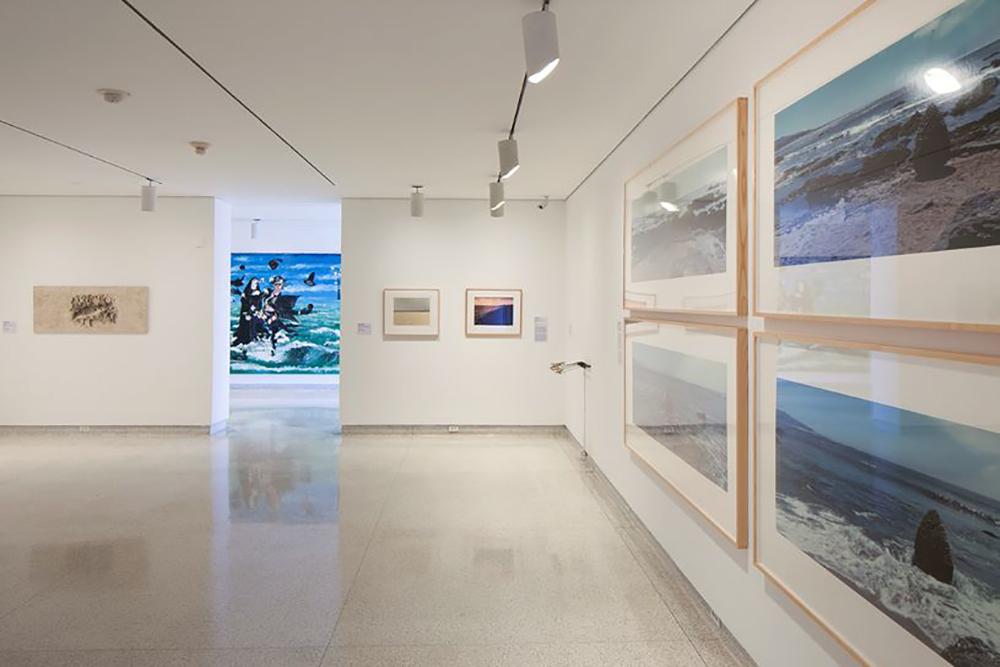
-
What is the Museum of Contemporary Art San Diego?
- Museum of Contemporary Art San Diego offers two locations in the region: one in downtown San Diego and one in La Jolla.
-
When was the museum established?
- The museum was established in 1950 and has grown to house an internationally-renowned collection of more than 4,700 contemporary and modern artworks.
-
What types of art are included in the collection?
- The museum’s collection spans painting, sculpture, photography, video, and installation, with a focus on emerging and under-recognized artists.
-
Are there any notable special collections?
- Yes, the museum holds significant collections of mid-century Pop Art, Latin American art, and artworks from the Tijuana region.
-
What is special about the downtown location?
- The downtown museum is located in the historic Jacobs Building, which formerly served as the baggage building for the Santa Fe Depot.
-
What can visitors enjoy at the La Jolla location?
- At the La Jolla location, visitors can explore the Edwards Garden Gallery and shop at the museum’s X Store.
-
What is the contact information for the museum?
- 1100 Kettner Blvd, San Diego, CA 92101, Phone: 858-454-3541
Affordable Activities in San Diego for Kids:
8. Explore Frontier Life at The Seeley Stable
Vintage wagons and Western stories bring early transportation to life in Old Town
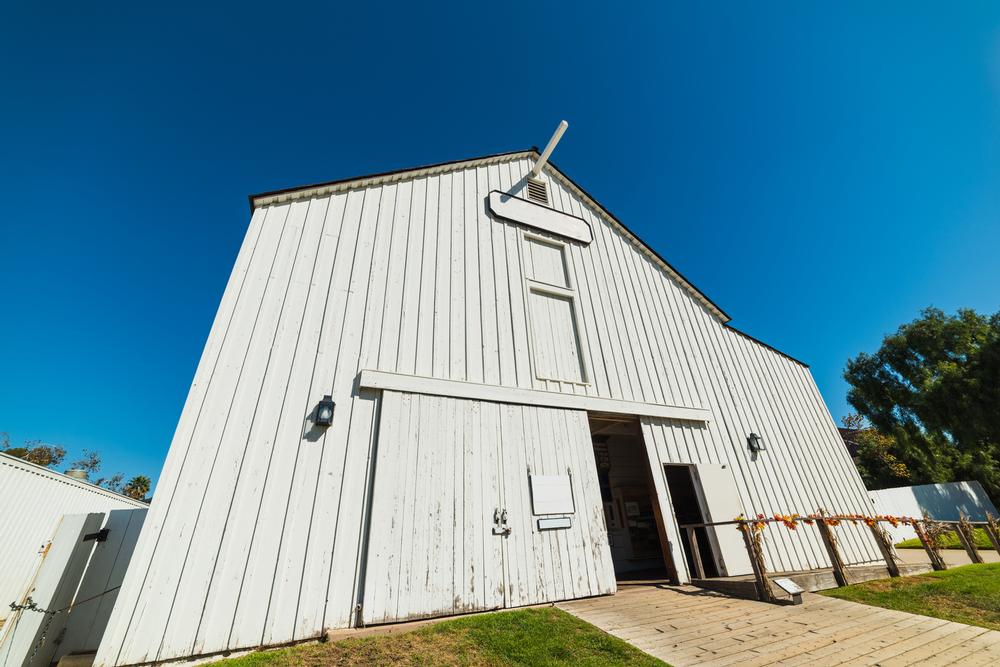
-
What is the Seeley Stable?
- The Seeley Stable is a preserved mid-19th century barn once used to house the stable horses and stagecoaches of stage line operator Albert Seeley, who operated transportation services between San Diego and Los Angeles.
-
When was the original Seeley Stable built?
- The original property was constructed in 1869, transforming a former two-story barn with a single-story rear room addition, power windmill, and surrounding sheds and fencing.
-
What happened to the original structure?
- Though the property was demolished in the late 1920s, it was reconstructed in 1974 and now operates as a museum within Old Town San Diego State Historic Park.
-
What can visitors see at the Seeley Stable Museum?
- The museum showcases 19th-century overland transport equipment and vehicles, including a preserved Concord stagecoach, carreta ox-drawn cart, mud wagon, and tow-wagon freighter.
-
Does the museum host events?
- Yes, a theater is also part of the museum, offering plays and public special events throughout the summer months.
-
Is admission to the Seeley Stable Museum free?
- Yes, the museum offers free admission daily.
-
Where is the Seeley Stable located?
- 4002 Wallace St, San Diego, CA 92110, Phone: 619-220-5422
9. Sink Your Toes into Bliss at Coronado Municipal Beach
Golden sands, gentle surf, and postcard views make this a coastal must
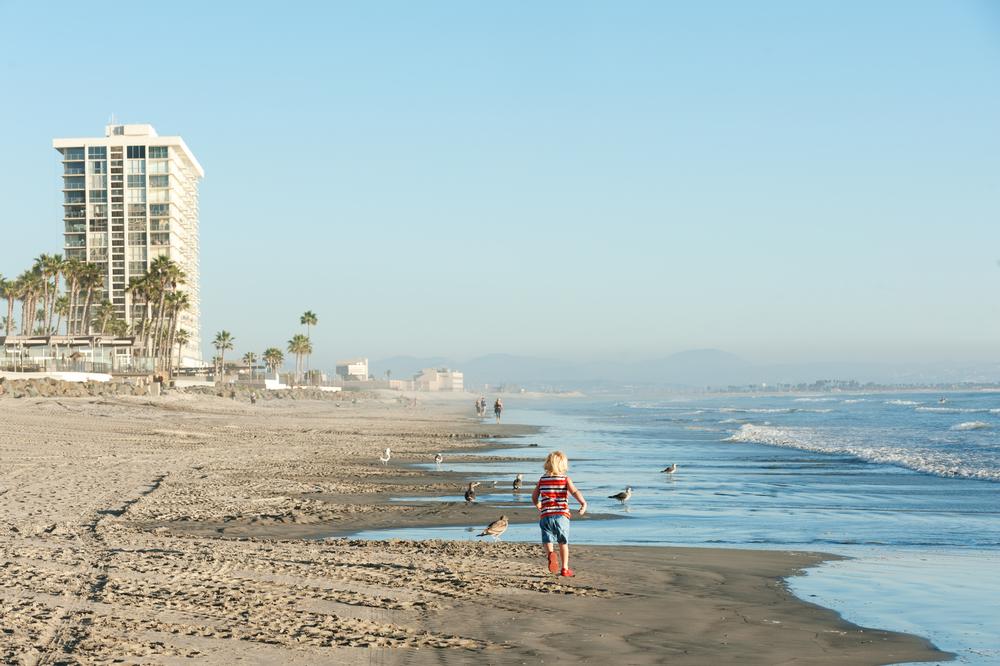
-
What is Coronado Municipal Beach?
- Coronado Municipal Beach was voted the United States' top public beach in 2012 by the annual "Dr. Beach" survey, which ranks beaches based on environmental and tourist accommodation factors.
-
What public areas are part of Coronado Municipal Beach?
- The beach includes four public areas: Coronado City Beach, Centennial Park, Glorietta Bay Park, and Tidelands Park, all offering water access, picnic areas, and children's playgrounds.
-
Why is the sand at Coronado Beach glittering?
- The sand is known for its glittering appearance, which is caused by the presence of mica in the beach sand deposits.
-
What activities can visitors enjoy at the beach?
- Visitors can enjoy coastline strolling, kite flying, surfing, and volleyball, which is available at several beachfront courts.
-
Are dogs allowed at Coronado Beach?
- Yes, along the northern end of the beach, dogs are allowed to roam freely with owner supervision.
-
What historic hotel is located at Coronado Beach?
- The beach is home to the Hotel Del Coronado, constructed in 1888, which has hosted Marilyn Monroe, Charlie Chaplin, and Franklin D. Roosevelt.
-
What is the address and contact information for Coronado Beach?
- Strand Way, Coronado, CA 92118, Phone: 619-552-7300
10. Meet the Unexpected at The Children’s Pool
From playful seals to oceanfront drama, this La Jolla spot is full of surprises
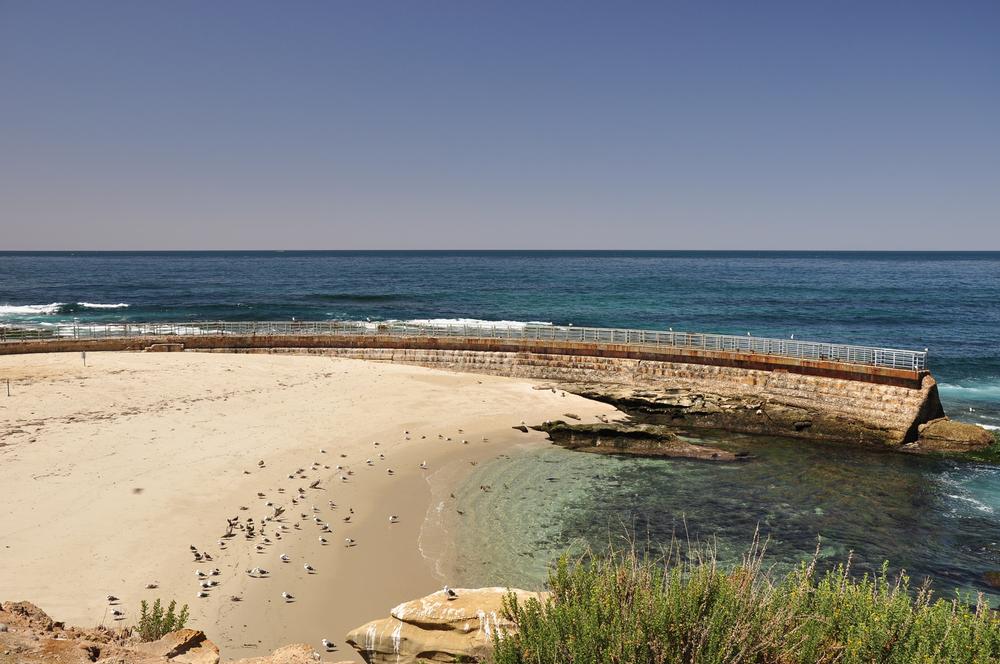
-
What is the Children's Pool in La Jolla?
- The Children's Pool is a small public beach in La Jolla, partially protected by a seawall, and offers free public access between May and December.
-
How and why was the Children's Pool created?
- It was created after the 1931 construction of a concrete breakwater, funded by philanthropist Ellen Browning Scripps, who wished to create a safe water play spot for children.
-
What are the scenic and recreational features of the beach?
- The beach offers stunning panoramic views of the Pacific Ocean and is popular with scuba divers due to nearby offshore reefs.
-
Why is the Children's Pool considered controversial?
- Since the mid-1990s, the beach has become home to a colony of over 200 harbor seals, making it a popular but controversial spot for seal watching.
-
Is swimming allowed at the Children's Pool?
- While swimming is permitted, it is discouraged due to bacteria from seal populations in the water.
-
Are there any visitor guidelines?
- Visitors are asked to exercise caution and show respect toward the seal population when visiting the beach.
-
What is the address of the Children’s Pool?
- 850 Coast Boulevard, Village of La Jolla, CA 92037
Frequently Asked Questions:
-
Question: What free historic attractions can be found in San Diego?
Answer: San Diego offers free historic attractions such as the restored buildings of the Old Town San Diego State Historic Park and the Gaslamp Quarter, which is listed on the National Register of Historic Places. -
Question: What outdoor recreational activities are available at San Diego's public beaches?
Answer: San Diego's free public beaches provide opportunities for swimming, surfing, and other outdoor recreational activities. -
Question: Are all free attractions in San Diego available every day?
Answer: Some attractions are free only on certain days, so it’s recommended to check before you go.
Map:
Plan Your Trip


